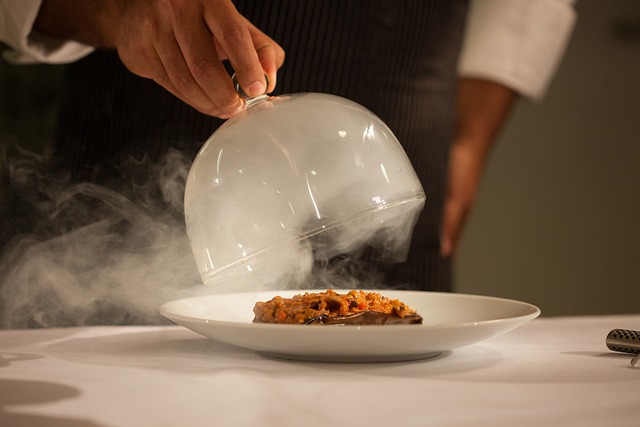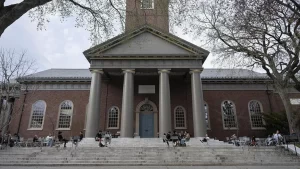
What Is a Michelin Star Restaurant?
A Michelin star restaurant is an establishment that has been recognized by the prestigious Michelin Guide for its outstanding quality, creativity, and consistency in food and service.
Michelin stars are highly coveted in the culinary world and can elevate a restaurant’s reputation to global recognition. Restaurants can receive one, two, or three stars, with three being the highest honor.
The History of Michelin Stars
The Michelin Guide was first published in 1900 by the French tire company Michelin.
Originally, it was meant to help motorists find accommodations, restaurants, and repair stations.
Over time, it evolved into the world’s most respected restaurant rating system. Michelin introduced the star system in 1926, initially awarding a single star to exceptional restaurants. By 1936, the three-tiered ranking system we know today was established:
- One star: A very good restaurant in its category.
- Two stars: Excellent cooking, worth a detour.
- Three stars: Exceptional cuisine, worth a special journey.
Interesting Facts About Michelin Stars
- Michelin inspectors visit restaurants anonymously and follow strict evaluation criteria, considering food quality, mastery of technique, personality of the chef, and consistency.
- Losing or gaining a Michelin star can dramatically affect a restaurant’s business and prestige.
- Some chefs have returned their Michelin stars, feeling the pressure of maintaining the highest standards too stressful.
- Michelin stars are awarded to the restaurant, not the chef, although chefs often gain personal recognition.
- Not all high-end restaurants have Michelin stars—only those reviewed and selected by Michelin inspectors.
Why Do Only Some States Have Michelin Star Restaurants?
Historically, Michelin focused on major culinary hubs like New York, California, and Chicago in the U.S.
For example, Texas didn’t have Michelin-starred restaurants until recently because the Michelin Guide had not expanded its coverage to the state.
Several factors contributed to this delay:
- No Michelin Guide Coverage – Michelin inspectors were not reviewing Texas restaurants, so even top-tier establishments couldn’t earn stars.
- Market Focus – Michelin prioritizes regions with established international dining reputations and dense culinary tourism markets.
- Expansion Strategy – Michelin’s presence in the U.S. has been gradual, only adding new regions when deemed viable.
Recently, Michelin finally expanded to Texas, recognizing the state’s evolving fine dining scene in cities like Austin, Dallas, and Houston.
Common Misconceptions
- Michelin stars mean luxury dining only: While many starred restaurants are high-end, some serve casual or affordable food with exceptional quality.
- Michelin stars last forever: Stars are re-evaluated yearly, and restaurants can gain or lose them based on performance.
- Only French restaurants receive Michelin stars: Michelin awards stars worldwide, including in the U.S., Japan, and many other countries.
- A restaurant with three stars is always better than one with one star: The number of stars reflects the experience level, not necessarily the quality difference.
Funny Stories about Michelin Stars
Here are some funny anecdotes related to Michelin stars and the restaurant world:
1. The Tire Company That Made Chefs Sweat
When people first hear that the Michelin Guide is run by a tire company, they often think it’s a joke. Imagine a chef spending decades perfecting their craft, only to be judged by an inspector sent by the same company that sells tires for SUVs. But hey, Michelin’s goal was always to get people to drive more—and what better reason to take a road trip than great food?
2. The Chef Who Threw His Michelin Stars Away
French chef Marco Pierre White was the first British chef to earn three Michelin stars, but instead of basking in the glory, he gave them up! His reason? He said he didn’t want to cook for critics anymore and was tired of the pressure. In his words: “I worked my whole life for this, and now that I have it, I don’t want it.” He then went on to judge cooking shows instead—less stress, more fun!
3. The Accidental Michelin Star
In 2017, a tiny noodle shop in Bangkok, Jay Fai, became the first street food vendor to get a Michelin star. The 70-something-year-old chef, known for her giant goggles and wok-frying skills, was shocked. She initially thought it was a prank! The star brought long lines and even more stress, making her consider giving it back. Luckily, she kept it—because who doesn’t love Michelin-starred street food?
4. The Restaurant That Had No Idea It Got a Star
A tiny, family-run bistro in France once mistakenly received a Michelin star. They served simple, home-style meals and were completely unprepared for the sudden flood of foodies expecting gourmet cuisine. The overwhelmed owner had to call Michelin to correct the mistake!
5. Gordon Ramsay’s Michelin Meltdown
When Gordon Ramsay lost two Michelin stars at his New York restaurant, he compared it to “losing a girlfriend.” He said it was so heartbreaking that he started crying in public. Imagine the world’s angriest chef tearing up over a missing star—someone hand him a Michelin-branded tissue!
Michelin stars may be prestigious, but as these stories show, they come with their fair share of unexpected surprises!
Michelin stars continue to be a mark of excellence in the culinary industry, symbolizing dedication, craftsmanship, and extraordinary dining experiences.



